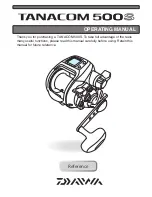
SAFETY
High pressure hazard risk when dismantling sub-sea equipment. Dismantling must only be
carried out by trained personnel.
Electric shock hazard risk when dismantling the equipment. Dismantling must only be carried
out by trained personnel.
Make sure the Pressure Relief Vent Valve is manually operated, in a well ventilated area, to
release any internal pressure before attempting to remove the end-cap.
Risk of burns. Do not change the battery pack if the housing is hot. Lower the transponder
overboard and wait for the housing to cool. Wear Personal Protective Equipment such as gloves.
Risk of impact injury. Do not stand in-line with the end-cap when removing from the
transponder.
Make sure the equipment is dry before dismantling.
Do not fit unauthorised battery pack types into an instrument.
For Lithium and Lithium Ion battery packs, Class D fire extinguishers should be used. Do not use
any other type of extinguisher.
The 8300 series of transponders weigh between 35 and 23 kg. Manual handling Equipment
(MHE) must be used to move the transponders. If MHE is not available, then a manual handling
assessment must be carried out prior to carrying out manual lifting / handling. Personal
Protective Equipment such as protective footwear and gloves must be worn before lifting the
equipment.
WARNINGS
STEP 1
It is recommended the operator complies with the Health and Safety Regulations applicable to the vessel and the
region before operating this equipment.
If the equipment is used in a manner not specified by the manufacturer, the protection provided by the
equipment may be impaired.
Documentation must be consulted whenever the warning symbol is found on the equipment, in order to find
out the nature of the potential hazard and any actions which must be taken.
The batteries used in the 8300 transponders can be lithium based. Due to the high risks associated with these
types of batteries, it is important that the safety instructions in this Quick Start Guide are read and fully
understood.
Only trained and qualified personnel must carry out the battery replacement procedure detailed in this Quick
Start Guide.
Do not expose batteries to extreme temperatures, in excess of 60
°
C, to prevent reduction in
battery life.
CAUTION
PRODUCT SUPPORT
Email: [email protected]
Tel: +44 (0) 1252 872288
Should you require NON-EMERGENCY product support for your transponder, email and telephone product
support is available during normal UK office hours (08:00-17:00). Alternatively, please contact your nearest
Sonardyne Office. Visit www.sonardyne.com for full details.
In emergency situations, the Sonardyne 24 hour helpline is answered during normal office hours - 08:00-17:00.
Outside these hours, your call is automatically transferred to an agency who will log the details of your
emergency and alert the appropriate Sonardyne personnel. Our aim is to ensure that emergency requests are
dealt with immediately during office hours and are responded to within 30 minutes at all other times.
SONARDYNE 24HR EMERGENCY HELPLINE: UK +44 (0) 1252 877600


































